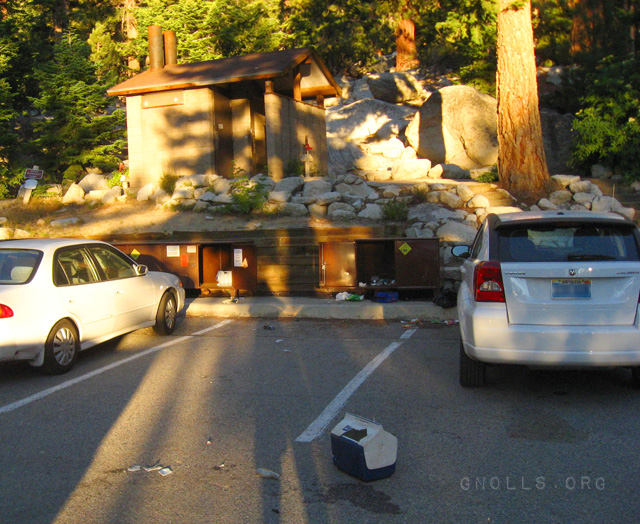Favorite Articles of the Moment
Disclaimer
• Your life and health are your own responsibility.
• Your decisions to act (or not act) based on information or advice anyone provides you—including me—are your own responsibility.
Recent Articles
-
We Win! TIME Magazine Officially Recants (“Eat Butter…Don’t Blame Fat”), And Quotes Me
-
What Is Hunger, and Why Are We Hungry?
J. Stanton’s AHS 2012 Presentation, Including Slides
-
What Is Metabolic Flexibility, and Why Is It Important? J. Stanton’s AHS 2013 Presentation, Including Slides
-
Intermittent Fasting Matters (Sometimes): There Is No Such Thing As A “Calorie” To Your Body, Part VIII
-
Will You Go On A Diet, or Will You Change Your Life?
-
Carbohydrates Matter, At Least At The Low End (There Is No Such Thing As A “Calorie” To Your Body, Part VII)
-
Interview: J. Stanton on the LLVLC show with Jimmy Moore
-
Calorie Cage Match! Sugar (Sucrose) Vs. Protein And Honey (There Is No Such Thing As A “Calorie”, Part VI)
-
Book Review: “The Paleo Manifesto,” by John Durant
-
My AHS 2013 Bibliography Is Online (and, Why You Should Buy An Exercise Physiology Textbook)
-
Can You Really Count Calories? (Part V of “There Is No Such Thing As A Calorie”)
-
Protein Matters: Yet More Peer-Reviewed Evidence That There Is No Such Thing As A “Calorie” To Your Body (Part IV)
-
More Peer-Reviewed Evidence That There Is No Such Thing As A “Calorie” To Your Body
(Part III)
-
The Calorie Paradox: Did Four Rice Chex Make America Fat? (Part II of “There Is No Such Thing As A Calorie”)
-
Interview: J. Stanton on the “Everyday Paleo Life and Fitness” Podcast with Jason Seib
|
“Why Are We Hungry?” will return next week. Meanwhile, I recommend you read it starting from Part I if you haven’t already, because Part III, and particularly Part IV, throw quite a bit of light on currently hot issues.
Adaptation to endurance exercise is important, because our ability to burn fat for energy is important:
J Appl Physiol. 1984 Apr;56(4):831-8.
Adaptations of skeletal muscle to endurance exercise and their metabolic consequences.
Holloszy JO, Coyle EF.
The major metabolic consequences of the adaptations of muscle to endurance exercise are a slower utilization of muscle glycogen and blood glucose, a greater reliance on fat oxidation, and less lactate production during exercise of a given intensity. These adaptations play an important role in the large increase in the ability to perform prolonged strenuous exercise that occurs in response to endurance exercise training.
However, one of the biggest problems with endurance training is diminishing returns. Holloszy and Coyle again:
Regularly performed endurance exercise induces major adaptations in skeletal muscle. These include increases in the mitochondrial content and respiratory capacity of the muscle fibers. As a consequence of the increase in mitochondria, exercise of the same intensity results in a disturbance in homeostasis that is smaller in trained than in untrained muscles.
Furthermore, though prolonged endurance exercise results in greatly increased fat oxidation, it also causes a period of decreased mitochondrial efficiency that lasts for at least 28 hours afterward…and probably longer.
Maria Fernström,1,2 Linda Bakkman,1,2 Michail Tonkonogi,2,3 Irina G. Shabalina,2 Zinaida Rozhdestvenskaya,2 C. Mikael Mattsson,1,2 Jonas K. Enqvist,1,2 Björn Ekblom,1,2 and Kent Sahlin1,2
Reduced efficiency, but increased fat oxidation, in mitochondria from human skeletal muscle after 24-h ultraendurance exercise
Journal of Applied Physiology May 2007 vol. 102 no. 5 1844-1849
The most important novel findings of the present study were that 1) mitochondrial efficiency decreased after ultraendurance exercise and remained reduced after 28 h recovery; 2) mitochondrial FA oxidation (state 3) and relative FA oxidation [PC/(PC + Pyr)] increased Post-Ex; and 3) noncoupled respiration rate (state 4) was reduced after 28 h of recovery.
Given these facts, we can easily see why “chronic cardio” produces more injuries than it does fitness. Continually pounding out the same mileage, day after day, quickly strands us on a performance plateau of diminishing returns—both in performance and in physique.
Here’s an alarming example, summarized from the above study by one of its authors:
Bakkman, Linda
Mitochondrial function adaptations to changed metabolic conditions
Department of Medicine, Solna, Karolinska Institutet, Stockholm, Sweden, 2010
“…The nine subjects were elite ultra-endurance performance athletes, all men. They had an impressive exercise background with 3-9 years of regular extreme endurance exercise and recent merits from national and international championships. … The group had a body fat content of an average 16.9% (range 10.8-26.1) of body weight, which is typical for males of their age.”
So much for the hypothesis that exercise, by itself, is enough to lose fat. If international ultra-endurance champions still carry a “typical” load of 17% bodyfat, how can the rest of us hope to attain the physique we’d like?
Beating The Law Of Diminishing Returns: Occasional Insanity Trumps Daily Misery
As Holloszy and Coyle make clear, the first feat of endurance at a given duration and intensity produces the greatest increase in respiratory capacity. So in order to bring ourselves to a high level of performance, it seems likely that occasional ridiculous efforts would produce the same adaptation as daily lower-intensity effort, for a much smaller time commitment and much less damage to our joints and heart. As I said in "Eat Like A Predator", “The only way to improve is to push your limits.”
To that end, I bring you…
22 Miles, 6200′ Up, 6200′ Down, Zero Calories: Mt. Whitney, Fasted
Inspired partially by Asclepius’ journey, I day-hiked Mt. Whitney—the tallest mountain in the 48 continental United States—on my way home, after the Ancestral Health Symposium. In other words, my training program involved sitting in a chair and listening to presentations…at sea level.
Would-be hikers start at 8,300 feet (2530 meters), and climb almost 6,200 feet (1890 meters) in 11 miles (17.7 km), on their way to the summit at 14,497 feet (4491 meters), before returning down the same trail for a total of 22 miles (35.4 km) and 12,400 feet (3780 meters) of elevation change. (Click here for relief maps, and all the information you could want about attempting it yourself.)
Most people take two or three days, camping at altitude to acclimate…but a substantial number attempt it as a day hike. Since I live at over 6000′ and am in reasonably good shape, I decided that it wasn’t enough of a challenge, and it would be a good test of my metabolic flexibility and ability to oxidize fat if I did the entire hike completely fasted. No breakfast, no energy bars, no sandwiches, no gorp, gels, blocks, shots, powders, or electrolytes. Water and my own fat would have to serve.
Did I mention I also used minimal shoes?
My hike started here, at the Whitney Portal parking lot, where delinquent bears had recently thrown a party.

There is an apocryphal quote, usually attributed to a Yosemite park ranger, about designing bear-proof containers: “There is considerable overlap between the intelligence of the smartest bears and the dumbest tourists.”
These food storage boxes were installed so that people don’t leave food in their cars at the trailhead: even a small black bear can easily break into a car, using nothing but its own strength. I suspect what happened here is that some people didn’t properly close the “bear boxes” after stashing their own food. There are two kinds of bear box: one uses a simple hidden latch, but the ones pictured use a sort of Allen key on a chain and are much trickier to open and close.
I found one of the simple ‘hidden latch’ type, and my cooler was safe upon my return.
2000 feet of altitude and several miles later, Whitney Portal is barely visible, with the Owens Valley beyond.

A record snow year meant the creeks were still running. Balance was required.


This is the last tree you’ll see. Note the saddle in the far distance: that’s where the previous picture of the Owens Valley was taken from, just a couple hours ago.

Now we’re in the high alpine. Progress slows somewhat at 13,600′ altitude, and I admit to having felt somewhat lightheaded. I’m not sure whether it was a lack of air or lack of calories, but a short rest at Trail Crest solved my problems.

Looking the other direction from Trail Crest:
 (The haze in the valley is due to a large wildfire to the south.) (The haze in the valley is due to a large wildfire to the south.)
This hike isn’t like running 22 miles on flat pavement: there are many miles of trail that look much like this:

And this:

But persistence and a steady pace soon placed me at the summit. Note the cheap skate shoes—which were actually quite functional, having both great ground feel and robust toe protection:

Whereupon I enjoyed stunning views of the entire Eastern Sierra that photographs simply cannot convey, and a relaxed hour or so on top of the world.

Life establishes itself anywhere it can, even at 14,000 feet:

And on sheer granite walls, where every shelf and crevice supports a tree:

The pictures end here, but the hike continued. I must admit that the final few miles, descending from Outpost Camp, were a grind…I wasn’t desperate or in pain, but I was quite ready to be back at my car, sitting down and eating the delicious gravlax, Greek yogurt, and blueberries I had stashed in a cooler.
Some notes on the journey and recovery, in no particular order:
- I didn’t feel hungry at all during the entire six-hour descent from the peak—and my hunger was totally manageable on the way up. Eating a diet high in saturated fats, primarily from meat and coconuts, appears to have increased my ability to oxidize my own fat for energy.
- I had to stop and rest a couple times on the ascent, but I never felt drained or helpless…just like I had got a bit ahead of my ability to produce energy.
- Since I wasn’t eating, I didn’t need to drink much water. In fact, though I brought water bottles, I only ended up drinking water where it was naturally available—so I could have done the entire hike carrying nothing but a windbreaker! (Note: not recommended.)
- Another benefit: Mt. Whitney is very heavily traveled, so hikers must pack out all their own poop. Not eating also meant not having to poop in a bag and carry it around with me all day.
- I felt fine the next day, though not sprightly, and hiked perhaps another seven miles. Neither was my appetite out of control: my body only went into recovery mode once I did nothing for most of a day, whereupon my appetite and sleep deficit caught up with me. (It felt like I was ready to keep going as long as there was a crisis, and my body only demanded recovery once the crisis was over.)
- I am not, to my knowledge, a gifted athlete. This is not a feat out of reach for any reasonably healthy human, given proper diet and a level of regular physical activity. (If you haven’t ever walked five miles on flat ground, Mt. Whitney is not the place to start.) What will stop you is injuries or degenerative disease, which are your real limitations.
- I could have easily kept hiking if I had to. My feet hurt a little from walking on sharp rocks all day, but I still had energy left to keep going.
To elaborate on this last point: Our capacity for energy storage, as fat, is basically infinite as it applies to a single day of physical effort, or even multiple days: 3500 calories per pound of fat goes a long way. Our limitation is the rate at which we can burn it for energy…
…and that is what we increase by pushing the limits of our endurance: the base rate at which we can keep going all day, and all night if we must. Fat oxidation is the foundation atop which all our impressive feats of momentary strength and quickness are built.
Where Are Your Limits?
We’re all quite comfortable here at our computers, with a solid roof over our heads, central heating, clean running water, enough to eat, and an only mildly dysfunctional government and police force…
…but life isn’t always so easy. Earthquakes and tornadoes, floods and tsunamis, wars and revolutions, genocides and epidemics and famines. The Rape of Nanking, the Trail of Tears, the Indonesian Tsunami, the Spanish flu, the Cultural Revolution, … the death toll of natural and human-caused disasters is beyond all comprehension.
Ask yourself: would you be a victim, a refugee, or an emigrant?
Live in freedom, live in beauty.
JS

(Part IV of a series. Go back to Part I, Part II, or Part III, or skip to Part V.)
This is a long and detailed article, but it’s very important. I believe the conclusions justify the length: we’re done laying groundwork, and we’re finally starting to build some answers to the original question: “Why are we hungry?”
I must emphasize that I have no stake in any of the current controversies. I have no diet books for sale and no research thesis to defend, and I began this series long before the AHS. My concern is (as always) to organize and present the facts as I understand them to you, my readers, so you can draw useful conclusions about your own diet and life.
Furthermore, my diet at the moment contains roughly a Perfect Health Diet-compliant 15% of carbohydrate, plus whatever I need for intense physical activity (though I don’t count or track my intake), so I don’t believe I belong to either the high-carb or low-carb camps.
In previous installments, we’ve established the following:
- Hunger is not a singular motivation: it is the interaction of several different clinically measurable, provably distinct mental and physical processes.
- In a properly functioning human animal, likes and wants coincide; satiation is an accurate predictor of satiety; and the combination of hunger signals (likes and wants) and satisfaction signals (satiation and satiety) results in energy and nutrient balance at a healthy weight and body composition.
- Restrained eating requires the exercise of willpower to override likes, wants, and the lack of satiation or satiety; the exercise of willpower uses energy and causes stress; and stress makes you eat more. Therefore, a successful diet must minimize the role of willpower.
Now we can examine some of the ways that our hunger signals fail us.
It is important to remember that, by definition, all our hunger drives are in balance with our willpower at any moment in time! Otherwise we would be eating more or less than we are. The issue is that for many of us, this balance is only reached at an unhealthy weight or body composition—or it involves an excessively stressful amount of willpower. Part III explores this subject in detail.
Why Are We Ever Sated?
The desired result of eating is satiety: our body’s signal that it is replete with nutrients. But first, let’s ask a question: why are we ever sated? Since starvation is an animal’s primary concern, why didn’t Paleolithic humans simply eat themselves into obesity whenever possible?
We all know what happens if we eat a big meal just before intense exercise: at best, our performance suffers greatly, and at worst, we vomit. This is because digestion requires a meaningful amount of energy. Clearly it would be counterproductive to go hunting when our mental and physical performance is greatly impaired. Even foraging would be impaired, as gathering in the wild requires a keen eye and close attention, and the brain uses perhaps 20% of our energy at rest.
So it’s clear that we must wait until our body has either used or stored the energy and nutrients from our previous meal before we perform at our best. The fact that ghrelin is neurotrophic makes this clear: our brains only kick into high gear when it would be both possible and beneficial to acquire more food.
This suggests an obvious consequence: energy retrieval from storage is an important part of satiety. We don’t eat via a constant intravenous infusion of exactly the nutrients we need, at exactly the rate we are using them: we digest them and store them for use as needed. I’ll explore this in detail below.
 Not so well suited to the African savanna. A secondary motivation is that stored fat both traps heat and slows us down. Since humans evolved as diurnal (daytime-active) hunters and foragers on the African savanna, heat dissipation was often our limiting factor in procuring food. (This is most likely why we are hairless and have sweat glands, as opposed to the inches-thick layer of fat surrounding, say, a polar bear.) And, of course, fat adds weight: consider how much slower you’d run with an extra 20 pounds attached to you. (Put on some two-pound wrist and ankle weights, a vest with twelve pounds of sand in the pockets, and see how fast you run the 400-meter.) So while some fat accumulation would have been beneficial as a buffer against bad times, there was clearly a point beyond which fat accumulation would have impaired our ability to hunt and forage.
Everything Flows Downhill From Satiety
As we previously established, satiety is our body’s signal that it is replete with nutrients. Therefore, it should be obvious that nothing can make up for a lack of satiety: no amount of tricks to achieve temporary satiation will make up for a nutritional deficiency.
Satiety Is Not Generic
As stated back in Part II, “hunger” is not a generic drive, satisfiable by a generic substance called “food”. A properly functioning animal is hungry for different foods, depending on its nutritional status: even butterfiles—insects!—are smart enough to lick water off of mineralized rocks, and every animal, from aardvark to zebra, is capable of finding and ingesting the myriad nutrients it needs to survive.
The Salt-Mining Elephants of Kitum Cave
There are caves in Mount Elgon National Park, Kenya, partway up the shield of the extinct volcano Mount Elgon. (The best-known is called Kitum Cave.) The soil in the park is of recent volcanic origin, and the high rainfall washes away many of its minerals, leaving animals throughout the reserve deficient in many things—most critically, sodium.
Kitum Cave reaches over 700 feet into the side of Mount Elgon, and the cave complex of which it is a part contains the only known salt deposits in the region. Consequently, nearly every herbivore in the park must make periodic pilgrimages to the cave—up the side of the mountain, and over a long, narrow, dangerous path with no escape—in order to lick sodium sulfate from the rocks of Kitum Cave. In fact, it is plausibly argued that Kitum Cave was primarily created by the mining actions of elephants scraping salt from its walls and floor!
Joyce Lundberg and Donald A. McFarlane
Speleogenesis of the Mount Elgon elephant caves, Kenya
GSA Special Papers 2006, v. 404, p. 51-63
(fulltext, includes pictures and figures)
From Lundberg and McFarlane’s overview article, “Mount Elgon’s Elephant Caves”:
“The caves, of which Kitum and Makingeny are the best known, have long been known to attract elephants and other animals. The herbivores enter the dark cave interiors to consume salts, mainly mirabalite and sodium sulphate (Glauber’s salt) that effloresce from the cave walls. The crystals are gouged out by elephant trunks and bushbuck teeth and licked off wall by buffalo.”
 Elephants in Kitum Cave. BBC 2 once aired an amazing documentary called “Elephant Cave”, which shows just how dangerous the round-trip to and from the cave is. Unfortunately it’s not available to watch online, but the enterprising web searcher can probably find a torrent of it.
Note that Kitum Cave is not the only example of a salt ingestion cave, just the largest known:
Lundquist Charles A., Varnedoe Jr. William W.
Salt ingestion caves
International Journal of Speleology, vol 35, issue 1, pp. 13-18, 2006.
(Note: containts link to fulltext PDF)
In conclusion, even small, skittish herbivores like bushbucks have instinctive hunger drives of sufficient discernment to motivate them to make a dangerous pilgrimage up a volcano to obtain just one of the many nutrients—sodium—they need to live.
We should not expect any worse from the hunger drives of a properly functioning human animal.
How Satiety Fails
Now we are ready to dig into the meat of this essay.
Satiety can fail in three ways:
- We fail to ingest the energy and/or nutrients our body requires.
- We fail to absorb the energy and/or nutrients our body requires.
- We cannot retrieve the energy and/or nutrients our bodies have stored.
Satiety Failure #1: Failing To Eat The Real Food We Require
We know from experience that no matter how many calories worth of Skittles or Oreos we eat, we won’t satisfy our hunger. Our stomachs might be full to bursting—but as soon as we have room to digest it, we’ll be hungry again, because Skittles and Oreos don’t give us the nutrients we need to live. And as I’ve explained above, satiety is not generic: if we’re short on any one of the hundreds of nutrients our body needs, we’ll keep eating until we get it.
I’ve linked this study before (hat tip to Fat Fiction), but since it’s so illustrative, I’ll link it again:
Y Li, C Wang, K Zhu, R N Feng and C H Sun
Effects of multivitamin and mineral supplementation on adiposity, energy expenditure and lipid profiles in obese Chinese women
International Journal of Obesity (2010) 34, 1070–1077
“After 26 weeks, compared with the placebo group, the MMS group had significantly lower BW [body weight], BMI, FM [fat mass], TC and LDL-C, significantly higher REE [resting energy expenditure] and HDL-C, as well as a borderline significant trend of lower RQ [respiratory quotient] (P=0.053) and WC [waist circumference] (P=0.071). The calcium group also had significantly higher HDL-C and lower LDL-C levels compared with the placebo group.”
How much is “significant”? From the summary:
“…The multivitamin and mineral group lost an average of 3.6 kg (8 pounds) of body weight, compared to 0.9 kg (2 pounds) and 0.2 kg (0.44 pound) for the calcium and placebo groups, respectively.
Protein targeting is another very important issue (previously discussed here.) Our bodies have an absolute requirement for complete protein—but unlike carbohydrate or fat, we have no storage depots for it. So if we don’t get complete protein in our diet, we must disassemble our own tissues to get it. (Previously discussed here.)
“Protein” is just chains of amino acids. “Complete protein” is protein containing all the essential amino acids—the ones we must eat because our bodies can’t make them—roughly in the proportions our body needs them.
On the other hand, if we eat too much complete protein, our bodies have a limited capacity to convert it into glucose…so we tend to desire neither too much nor too little complete protein. For more on protein targeting, including links to the scientific literature, read Dr. Paul Jaminet’s excellent summary, “Protein, Satiety, and Body Composition.”
(This satiety mechanism can be extended to other essential nutrients—but this article is already far too long!)
In closing, I’ll note that a can of Pringles has the same number of calories as a dozen large hard-boiled eggs. Which will leave you sated hours later: 32 Pringles (300 calories), made of seed oil and potato slurry—or four hard-boiled eggs (300 calories), containing 12g of complete protein and a host of vitamins, minerals, and essential nutrients like choline and lutein?
Satiety Failure #2: Failing To Absorb Nutrients
It doesn’t matter if we eat real food if we can’t absorb its nutrients.
Unfortunately, covering the various gut malabsorptions and dysbioses, such as celiac, IBS, Crohn’s, and SIBO, is well beyond the scope of this series. However, I must stop to point out that a diet low in simple sugars and high-GI simple starches, and that eliminates the antinutrients, enzyme inhibitors, and gut irritants found in grains and (to a lesser extent) beans and many nuts, is beneficial for almost all such issues.
Yes, I’m talking about a functional paleo diet.
(Those interested in digging more deeply into the subject might want to watch Dr. BG’s presentation at AHS 2011. Here’s the video, and here are the slides.)
Satiety Failure #3: Energy Stuck In Storage
We use energy continually throughout the day. And depending on how active we are, our energy usage can go from ‘minimal’ (sitting on couch watching TV) to ‘moderate’ (walking, intense mental activity) to ‘huge’ (sprinting at top speed, lifting heavy objects).
Yet we do not eat a constant stream of calories that corresponds exactly to our current degree of physical and mental effort. Our bodies must store the energy we eat for later usage. And as our storage capacity for glucose (as glycogen) is very limited, our body’s long-term energy storage is…fat.
Glycogen: A Short Explanation
 A glycogen hairball.
Glycogen is a big hairball of glucose molecules connected to a protein called glycogenin, and it’s how our body prefers to store glucose. However, our body’s glycogen reserves are small: perhaps 70g in the liver and 200g in all our skeletal muscles, combined.* (The second capacity increases with muscle mass and training: a large, muscular, trained athlete can store perhaps 400g.) Furthermore, glycogen cannot be shuttled out of or between muscles: it’s only available to the muscle containing it.**
This isn’t very much energy: about 1100 calories’ worth, of which only 240 are available to the brain via the liver. So our bodies store most excess energy as fat, which is more energy-dense (approximately 9 calories/gram vs. 4), and for which we have a basically infinite storage capacity in our adipose tissue (‘fat cells’).
* Figures cited for muscle glycogen storage vary widely, and I haven’t found an authoritative source. Furthermore, it’s not clear how deeply storage is or can be depleted by exercise: even running to exhaustion only depletes specific muscles by perhaps 40-60%.
** This study (hat tip to alert commenter Franco) appears to show that glycogen can move slowly between muscles (over the course of hours), but only after exercise and only when fasted. Transfer doesn’t appear to be significant during exercise.
But what if we had trouble using fat for energy—or using energy at all? Clearly we’d have a problem: we would eat food, and as soon as the energy was either used or stored, we’d be hungry again—even though we were gaining weight!
This is exactly what happens to many people.
I’ve previously discussed metabolic flexibility and the RER (“Respiratory Exchange Ratio”), also known as the RQ (“Respiratory Quotient”), at length in this article. Metabolic flexibility (“met flex”) is the ability of our cells (specifically, our mitochondria) to switch back and forth between glucose oxidation and fat oxidation for energy, and the RER/RQ is how we measure what proportion of glucose vs. fat we’re burning.
It turns out that:
- The obese have impaired metabolic flexibility.
- The obese have impaired mitochondrial capacity to turn nutrients into energy in the muscles.
- The obese have an impaired ability to oxidize fat for energy, which we can objectively measure.
- Both the formerly obese and the soon-to-be-obese also suffer these impairments.
Linda Bakkman, Maria Fernström, Peter Loogna, Olav Rooyackers, Lena Brandt, Ylva Trolle Lagerros
Reduced Respiratory Capacity in Muscle Mitochondria of Obese Subjects
Obes Facts 2010;3:371-375
(fulltext available as PDF)
“Obese subjects had a decreased respiratory capacity per mitochondrial volume compared to the reference groups: this was evident in state 4 (65% and 35% of reference group A and B, respectively) and state 3 (53% and 29% of A and B, respectively) (p < 0.05)."
In other words, obese people have a greatly decreased ability to create energy from the nutrients they ingest.
The ability to oxidize fat is also impaired. How great is this impairment?
Ranneries, C., Bulow, J., Buemann, B., Christensen, N. J.,
Madsen, J., & Astrup, A.
Fat metabolism in formerly obese women.
AJP – Endo January 1998 vol. 274 no. 1 E155-E161
“…Fat mobilization both at rest and during exercise is intact in FO [formerly obese], whereas fat oxidation is subnormal despite higher circulation NEFA levels. The lower resting EE [energy expenditure] and the failure to use fat as fuel contribute to a positive fat balance and weight gain in FO subjects.”
The difference is remarkable. From Table 2 of Ranneries et.al., we find these startling facts:
- Normal subjects are burning 30% more calories at rest than the formerly obese.
- Normal subjects are burning 7% carbs and 78% fat at rest, whereas formerly obese subjects are burning 49% carbs and 34% fat at rest!
Let that sink in for a moment. These aren’t even the obese: they’re the formerly obese. So the theory that some people become “metabolically broken” has factual support.
Here’s the graph of fat oxidation before, during, and after an hour-long bout of exercise. The triangles are controls, the circles are the formerly obese:
 Fraction of energy expenditure covered by fat oxidation (E%) during rest (t = 0 min), exercise (t = 0–60 min), and recovery (t = 75 min) in formerly obese subjects (FO, •) and matched controls (C, ▿). Values are means ± SD. We can easily see that normal subjects have metabolic flexibility—the ability to switch back and forth between carb and fat oxidation—whereas the formerly obese are impaired. (Though exercise does increase metabolic flexibility, as I’ve previously noted.)
Continuing, we see that RER (= RQ) is predictive of future obesity:
F. Zurlo, S. Lillioja, A. Esposito-Del Puente, B. L. Nyomba, I. Raz, M. F. Saad, B. A. Swinburn, W. C. Knowler, C. Bogardus, and E. Ravussin
Low ratio of fat to carbohydrate oxidation as predictor of weight gain: study of 24-h RQ
AJP – Endo November 1990 vol. 259 no. 5 E650-E657
“Subjects with higher 24-h RQ (90th percentile) independent of 24-h energy expenditure were at 2.5 times higher risk of gaining greater than or equal to 5 kg body weight than those with lower 24-h RQ (10th percentile).”
There are many more interesting papers I could cite and quote here—but if I do so, this article will expand to an unreadable size! So, instead of bombarding you with more citations, I’ll quote this excellent research review, which contains more citations for the above facts, and even more fascinating data for which space does not permit discussion.
Mary Madeline Rogge
The Role of Impaired Mitochondrial Lipid Oxidation in Obesity
Biol Res Nurs April 2009 vol. 10 no. 4 356-373
(fulltext available as PDF)
“Figure 2. In obesity, impaired glucose tolerance, and type 2 diabetes, mitochondrial beta-oxidation is decreased in skeletal muscle cells.”
[Beta-oxidation is the process by which mitochondria produce energy from fat.]
“Carnitine palmitoyltransferase 1 (CPT1) activity, necessary for the transport of long-chain fatty acids into the cell, is diminished, leading to the accumulation of fatty acyl-CoA within the cytosol. Under the influence of the enzyme acetyl-CoA carboxylase (ACC), unmetabolized fatty acyl-CoA is converted to malonyl-CoA and committed to the re-synthesis of fatty acids, which can accumulate within the cell or be transported to other tissues as triglycerides. The reduced ability to use fatty acids for ATP production increases obese individuals’ reliance on glycolysis and decreases their exercise capacity.”
If you want to learn more, p. 361 of the full text and the subsection “Decreased Fat Oxidation” will be quite illuminating, and I strongly recommend reading it. For that matter, just read the whole paper, as it’s an excellent overview and summary.
These facts provide an explanation for the additional fact that some people, particularly the obese, do not find carbohydrate to be satiating:
Chambers L, Yeomans MR.
Individual differences in satiety response to carbohydrate and fat. Predictions from the Three Factor Eating Questionnaire (TFEQ).
Appetite. 2011 Apr;56(2):316-23. Epub 2011 Jan 8.
“Those scoring high on the TFEQ-disinhibition scale consumed more energy at the snack test than those with low TFEQ-disinhibition, but this was only following the high carbohydrate breakfast. … In normal-weight females the tendency to overeat may be related to insensitivity to the satiating effects of carbohydrate.”
An impaired ability to burn fat for energy means that you will no longer be sated once your blood sugar drops, leaving you hungry again—even though most of the energy has been stored and you are in positive energy balance. In other words, the combination of impaired fat oxidation and a high-carbohydrate, low-fat diet is likely to leave you both hungry and gaining weight. (See this study for a real-world instrumented comparison.)
Impaired fat oxidation also causes the “low carb flu”. You’re forcing your body to adapt to burning fat by refusing to provide it with carbohydrate—but since your mitochondria don’t burn fat very well, you’ll have very little energy until you adapt.
I conclude this section with several thoughts:
First, this is not the “greedy fat cells” theory of obesity, which posits an inability of the obese to retrieve fat from fat cells into circulation. That ability appears to be intact. What is indisputably damaged is the mitochondrial function of the obese, the formerly obese, and the soon-to-be-obese, and their ability to oxidize fat for energy.
Second, any valid theory of obesity or its treatment must take the facts of these metabolic impairments into account.
Third, satiety is indeed a primary driver of hunger, and without satiety we will always be hungry—but as important as it is, this is only one part of the answer to “Why are we hungry?”
Conclusion
A lack of satiety will leave us hungry no matter what else we do to compensate.
We fail to achieve satiety in the following ways:
- By not ingesting the energy and/or nutrients our body requires.
- By not absorbing the energy and/or nutrients our body requires.
- By an inability to retrieve the energy and/or nutrients our bodies have stored, due to impaired metabolic flexibility caused by impaired mitochondrial function and, most importantly, impaired fat oxidation.
Thank you for reading all the way through this long but (I believe) rewarding article! The following installments explore failures of the other hunger drives—and once we understand the failures, we can finally begin to construct workable solutions.
Live in freedom, live in beauty.
JS
Continue to Part V: When Satiation Fails…Calorie Density, Oral Processing Time, and Rice Cakes vs. Prime Rib.
This is Part IV of an ongoing series. Go back to Part I, Part II, or Part III.
Did you find this article interesting or illuminating? I certainly hope so, because writing it was an ordeal. Use the buttons below to share it!
“Why Are We Hungry?” will return next week.
(Jump to Part I, Part II, Part III)
I’m sure everyone who wasn’t there is experiencing some combination of fatigue and jealousy upon seeing everyone post about the 2011 Ancestral Health Symposium—because it’s nearly impossible to say anything about it without blatant namedropping. I’ll get to that in a moment.
First, though, I have to recognize those who were, to me, the most important people in attendance:
YOU.
My readers, fans, and commenters.
I was thrilled to meet so many people who read, enjoy, and learn from the articles I write here at gnolls.org—and to meet so many fans of The Gnoll Credo, both at the Friday night “Meet the Authors” event and throughout the Symposium. From the MD who told me “I refer people in the ER to your website” to the person who had just bought his fourth copy of TGC because his friends won’t give them back, I was honored by each and every one of you. Writing is communication, and your respect means I’ve succeeded.
Thank you.
You Never Forget Your First Time
Beginnings are always special. There’s something magical about meeting someone else for the first time. Multiply that by several hundred in attendance and an exploding field of knowledge…
Having been present at or near the beginnings of other now-famous events and movements, I can say this: the AHS will be huge next year. Not only is everyone talking about what a great time they had—it’s become obvious that there’s much more to discuss. 2011 was mostly about diet, and the presentations didn’t even come close to exhausting that subject, let alone all the other evolutionary discordances of modern life.
Disagreement Is How Science Gets Done
Though the AHS was mostly a hugfest, there were disagreements. This is healthy! The ancestral health movement depends on many hypotheses, and science is how we decide whether they are correct—or just plausible.
Plus, if everyone already knew everything and agreed on everything, we wouldn’t need to have conferences.
I’ve noticed several people dismissing Dr. Boyd Eaton’s talk as utopian, and embracing the “nasty, brutish, and short” stereotype. Ask yourself: where does the human sense of fairness and justice come from? Why do we instinctively desire it? Perhaps…because it was our evolutionary context? (See: The Civilized Savage and the Uncivilized Civilization)
Also consider the difference between individual and tribal violence (single and small-group combat) and institutional violence (war, genocide, famine). I’ll have more to say about this in the future.
Special Mention: The Namedropping Section
Many people have commented on the physical health of the attendees. However, I was more impressed by the vitality of everyone I met. Faces were animated, discussions were intense, speech was articulate and quick. I was surrounded by people who were mentally sharp as well as physically capable. The energy was intoxicating.
No doubt I will forget some of the wonderful people I met, but here goes:
First I must appreciate my dinner guests for the first night: since I eat like a carnivorous horse and realized that Animal would be tapas-like portions (and not gluten-free), I organized an outing to Koreatown for delicious all-you-can-eat Korean barbecue.
 Yes, that's thick-sliced pork belly. And brisket. Not shown: everything from tongue to abomasum. I had the honor of being joined by the frighteningly smart yet totally unassuming Dr. Paul and Dr. Shou-Ching Jaminet; the amazing, dynamic Dr. B G and her wonderful sister; David Despain, who should be better-known in the ancestral nutrition community; Dr. Tim Gerstmar, whose presentation with Dr. B G was excellent; and Jolly the unstoppable conference photographer. We sampled everything from thick-sliced pork belly to beef tongue to cow abomasum, and of course, plenty of delicious kimchi to aid and replenish our intestinal flora. Thank you all for a wonderful evening!
And after the MovNat session went for twice its allotted time, I was glad to be invited to Fogo de Chao (aka “Meat On A Sword”) on Saturday night by Clifton Harski, James Dang, Justin, and the rest of the crew which caipirinhas made me not remember.
 I blame Brazil. I had the further privilege of meeting and speaking with:
Dr. Doug McGuff, who gave a refreshingly technical yet straightforward talk about what Body By Science does and how it works; Dr. Aaron Blaisdell, who deserves all our thanks for making the AHS happen; the kind yet piercingly sharp Dr. Emily Deans; Richard Nikoley, who needs no introduction from me or anyone else; the ubiquitous and unstoppable Dr. Jack Kruse (aka The Quilt); Denise Minger, who, contrary to the vegan propaganda, is indeed a real person; Tom Naughton, who is just as funny in person; the ubiquitous and gracious John Durant; the dynamic duo of Henry from Fitbomb and Michelle from Nom Nom Paleo; the wonderful Sarah Fragoso of Everyday Paleo; Melissa ‘Melicious’ Joulwan, whom I can totally picture kicking butt in roller derby; Andrew Badenoch, whom I need a late-night conversation with; Kyle from Bare 5; Tony from the unjustly neglected Emotions for Engineers; Pete from the similarly and unjustly neglected Grass Based Health; Dr. David Pendergrass for sending a copy of his poster; Tucker Max, who is far more patient and articulate than you’d guess; Chris Masterjohn, whose name is its own adjective, and Melissa McEwen; Robb Wolf, who is two people worth of energy; the unfailingly gracious Dr. Stephan Guyenet; Dr. Guy André Pelouze, the Doctors Eades, Mark Sisson, Jamie Scott, Julianne, Dr. Boyd Eaton, Dr. Staffan Lindeberg, Dr. Andreas Eenfeldt, and all the hundreds of people that two days full of presentations didn’t give me time to meaningfully interact with or whom I forgot to mention.
A Few Requests For The Next AHS
- More “down time” to talk with the other attendees. I was often faced with a choice of cutting off a great conversation or missing a presentation.
- A mix of short and long time slots. I think there are a lot of topics that would be well-served by a 20-minute presentation, and it would give more people a chance to present.
- A barbecue or other paleo food option on site. I brought gravlax, tri-tip, fruit, and Greek yogurt in a cooler—but it was a long walk to the car and back in order not to miss anything, and I wasn’t going to eat the junk from the food court.
Live in freedom, live in beauty.
JS
Any other ideas for next time? Suggestions for a location? Did I forget you by accident? Leave a comment!
|
“Funny, provocative, entertaining, fun, insightful.”
“Compare it to the great works of anthropologists Jane Goodall and Jared Diamond to see its true importance.”
“Like an epiphany from a deep meditative experience.”
“An easy and fun read...difficult to put down...This book will make you think, question, think more, and question again.”
“One of the most joyous books ever...So full of energy, vigor, and fun writing that I was completely lost in the entertainment of it all.”
“The short review is this - Just read it.”
Still not convinced?
Read the first 20 pages,
or more glowing reviews.
Support gnolls.org by making your Amazon.com purchases through this affiliate link:

It costs you nothing, and I get a small spiff. Thanks! -JS
.
 Subscribe to Posts Subscribe to Posts
|
Gnolls In Your Inbox!
Sign up for the sporadic yet informative gnolls.org newsletter. Since I don't update every day, this is a great way to keep abreast of important content. (Your email will not be sold or shared.)
IMPORTANT! If you do not receive a confirmation email, check your spam folder.
|






 (The haze in the valley is due to a large wildfire to the south.)
(The haze in the valley is due to a large wildfire to the south.)













